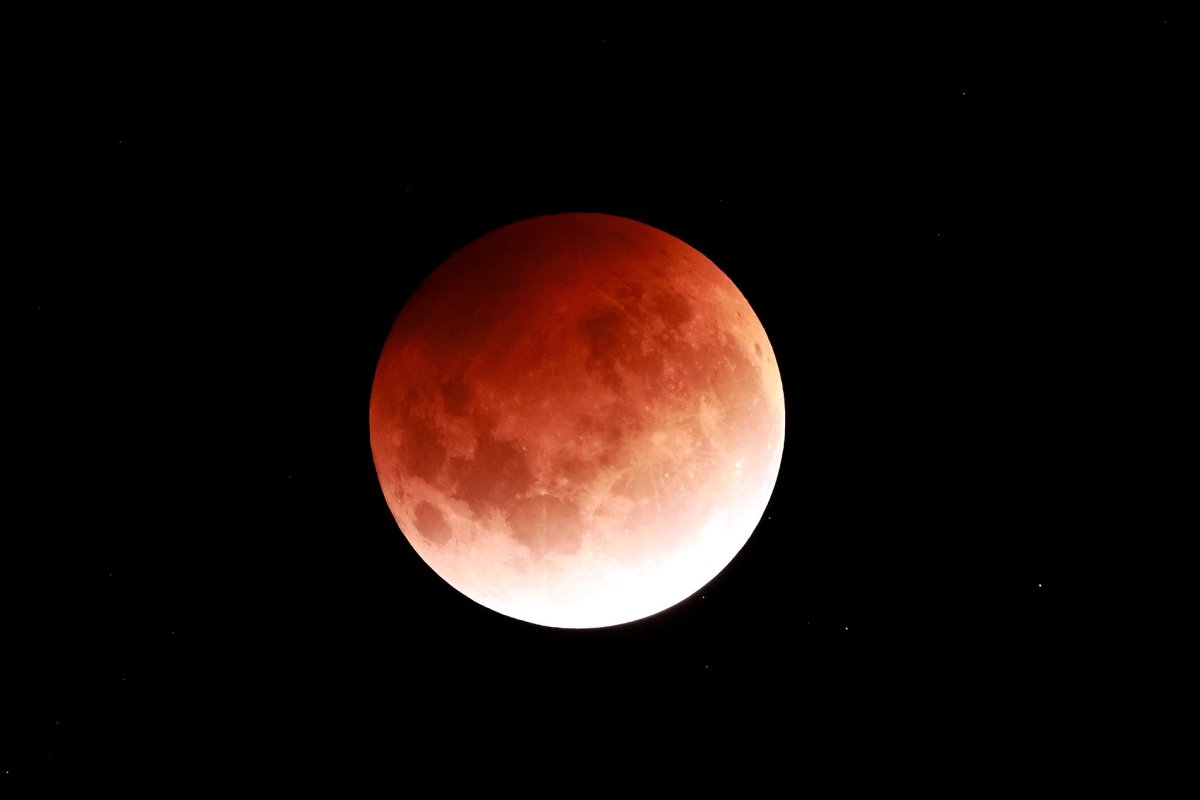A beautiful lunar eclipse could be seen in night skies across the U.S. on Sunday night and in the early hours of Monday, with the moon turning a dusty shade of red.
Lunar eclipses in general aren't particularly rare. Like solar eclipses, they tend to take place about twice a year. However, last night's event was more unusual in that it coincided with a "super moon," a term referring to when the moon is at its closest point to Earth.
This, coupled with the red hue caused by the eclipse, led many to refer to last night's moon as a "super blood moon" or "blood supermoon."
One of our meteorologists was able to capture this great photo of the lunar eclipse this evening! Were you able to get outside to get a view? pic.twitter.com/b1MAZuhjaI
— NWS Houston (@NWSHouston) May 16, 2022
A lunar eclipse occurs when the Earth passes in between the sun and the moon, blocking most of the sun's light from reaching the moon. Some sunlight does hit the lunar surface, but only after passing through Earth's atmosphere first. This bends the light, causing it to appear red.
The visual spectacle may have some sky-watchers wondering when the next lunar eclipse will be. Fortunately the wait won't be long.
The next lunar eclipse is due to occur on the night between November 7 and November 8 this year. It will be another good one for those living in the U.S. and Canada, with the full eclipse expected to be visible across much of North America, but particularly in western parts.
It will also be visible over east Asia and eastern parts of Australia.
If you missed Sunday's lunar eclipse and want to catch another one, that will be the one to see. Once November's lunar eclipse has finished, the U.S. won't see another one like it until March 2025.
The reason for this is that while lunar eclipses do technically take place two or three times a year, they're not always "total" eclipses. Sometimes the moon may only pass partly through Earth's shadow, causing part of it to turn red rather than the whole thing. Other times the eclipse may be so slight that it's barely noticeable at all.
This will be the case through 2023 and 2024, when all five lunar eclipses will be either partial or penumbral, when the moon only passes through Earth's outer shadow.
The other added complexity is that lunar eclipses aren't always visible from the same place. One year a total eclipse may be visible over all of the U.S., other years it may take place on the opposite side of the Earth.
The March 2025 lunar eclipse will be visible across all of North and South America, according to graphics and animations by the time and astronomy website TimeAndDate.com.

Uncommon Knowledge
Newsweek is committed to challenging conventional wisdom and finding connections in the search for common ground.
Newsweek is committed to challenging conventional wisdom and finding connections in the search for common ground.
About the writer
To read how Newsweek uses AI as a newsroom tool, Click here.








